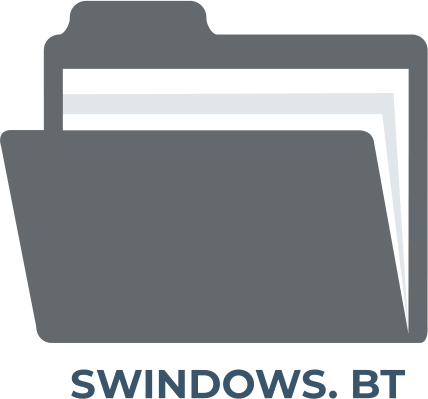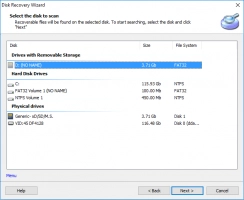How to interact with $ windows. bt folder?

In this article you will find out:
- windows 7, 8, 10 case
- how to interact with it
- how to protect your data
Are you ready? Let's read!
Windows 7, 8
$ WINDOWS. ~ BT and $ WINDOWS refer to hidden files located in the system directory, where your operating system is installed. Hence, you need to follow several steps to access them. To do this, you need to display hidden files in Windows Explorer or any other explorer. Generally, $ WINDOWS. ~ BT and $ WINDOWS are used to update your operating system to Windows 10 or to install updates to it. You can find the files $ WINDOWS. ~ BT and $ WINDOWS in several versions of Windows, namely 7, 8, or 10. When downloading updates, the user can decide whether to install the $ WINDOWS. ~ BT and $ WINDOWS on your operating system or not. Note, however, that $ WINDOWS. ~ BT and $ WINDOWS can take up a lot of free space in the operating system, which is especially important for users with a small disk.
During the free use of Windows 10 updates, users of Windows 7 and 8 operating systems can take advantage of automatic file downloads for Windows 10. These files are downloaded and saved in the $ WINDOWS folder. ~ BT. However, when the free use of Windows 7 and 8 comes to an end, this upgrade process to Windows 10 becomes impossible.
Microsoft Windows has a feature to remove such files from the system directory if the $ WINDOWS. ~ BT and $ WINDOWS continue to reside on it. This way, the operating system will free up enough space on your hard drive.
Windows 10 Users
As mentioned above, Windows 10 has a folder $ WINDOWS. ~ BT in the Windows system directory. Remember that these files are used to revert to a previous version of Windows or an earlier build of Windows 10. You can draw parallels to the Windows.old folder, which contains files from a previous Windows installation. That is, you can find both folders in the directory after upgrading the operating system to Windows 10 - the folders Windows.old and $ WINDOWS ~ BT.
The folder $ WINDOWS. ~ BT also contains log files. For example, you have chosen to download and open a media creation program—the folder $ WINDOWS. ~ BT is automatically created and contains several installation log files. At the same time, the media creation tool will install the folder $ WINDOWS. ~ WS. This folder will contain most of the Windows installation files. Your Windows operating system has a feature to automatically delete the listed files. This wastes a significant amount of hard disk space. This usually occurs on the tenth or thirtieth day after the Anniversary Update.
How to interact with it
You can delete $ WINDOWS ~ BT at any time to free up free space on your hard disk, if necessary. However, remember that doing so will permanently lose the ability to revert to a previous build of Windows 10 or the version of Windows on your computer. Recall that, earlier, this could be done by going to the "Settings" in the control panel and opening the "Update and Security" section, then the "Recovery" button is pressed. In any case, you already know that after ten or thirty days, Microsoft will automatically delete these files. If you do decide to delete the files, please follow our instructions.
Note: Under any circumstances, do not remove $ WINDOWS. ~ BT and $ WINDOWS in a simple way through the explorer.
Remember, any version of the Windows operating system has a Disk Cleanup tool. So open the Disk Cleanup tool on your computer and click on Clean Up System Files. In the list that opens, you will see that $ WINDOWS. ~ BT and Windows.old in Windows 10 are folders for previous installations of the operating system. Usually, the folder $ WINDOWS. ~ BT on Windows 7 and 8 and the folder $ WINDOWS. ~ WS in Windows 10 are temporary. Click OK. Congratulations, you have achieved your goal. It sometimes happens that after following the previous steps, the $ WINDOWS. ~ BT will not be deleted. Don't worry; it contains some spare log files or unnecessary installation files in Windows 7 or 8. Now, try to delete them manually using File Explorer. Select the files and click "Delete". You have achieved your goal again.
Protect your data
If something went wrong and you want to return all deleted and damaged files to their places, use DiskInternals Partition Recovery. This will help you get your folders $ WINDOWS. ~ BT и $ WINDOWS that you think are irretrievably lost. With DiskInternals Partition Recovery, you can recover deleted or damaged data of various formats on any media on your computer.
Using the program, you can safely open any protected folders and view their contents. You will be surprised that even if the corrupted data takes up a significant amount of hard disk space, the application will open these files and restore them, if necessary.
A well-thought-out program will help you save the found information on any medium. Please note that DiskInternals Partition Recovery is compatible with many well-known file systems: HFS, FAT12, ReFS, UFS, NTFS, etc., and converts them free of charge if necessary.
If you like the program and need to save the recovered files to a medium, purchase the license of Partition Recovery to be able to save recovered files.


You will have the most advanced lost file recovery software on the market today.



